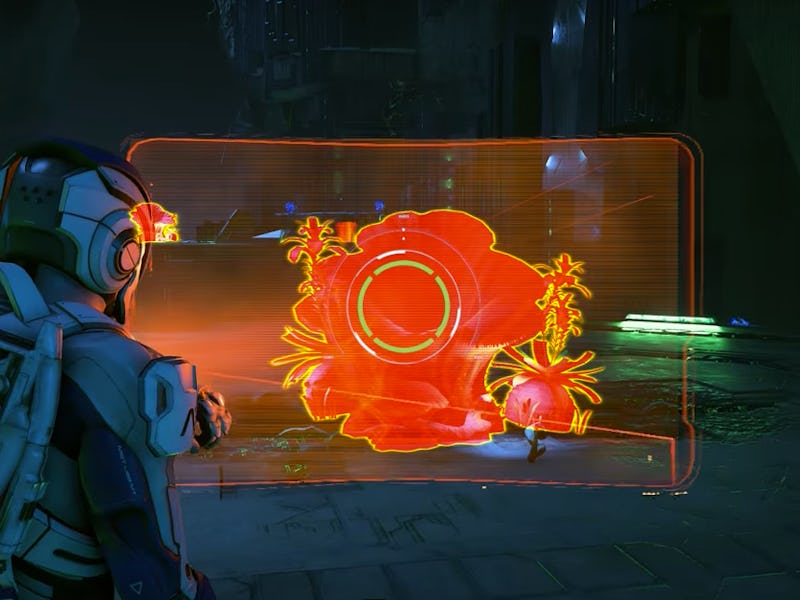When we find plant life on alien planets, it’s going to look really, really weird. And our first glimpse of Mass Effect: Andromeda suggests that the game’s creators have taken that certainty to heart.
In a demo presented at Sony’s Playstation Event on Wednesday, we were treated to a subterranean cavern, some jetpack-assisted jumping (!) and some really, really strange alien plant life. Our in-game character does a quick scan and notes that, without any discernible sources of water or sunlight, this plant should be dead.
So what the hell is it?
The scan reveals a bit of key information: It refers to the plant as a “thallose lifeform” — thallose being a biological term used to describe organisms with no clear delineation between organs. In this case, there’s no distinction between the plant’s leaves, roots, and stem; it’s all sort of one big thing, which we can tell pretty clearly just by looking at it. Other real-life thallose lifeforms include organisms like fungi, algae, liverworts, and lichens, and the tentative classification into the genus Riccia suggests that this particular lifeform is related to a real-life thallose lifeform known as liverwort.
The plant's tentative classification into the genus Riccia suggests that it would typically require an environment with abundant water.
The scan also tells us that the plant contains chlorophyll, so it’s not totally unfamiliar. Chlorophyll is key to photosynthesis, the process that allows plants to take in energy from the sun (or other source of UV light) and convert it into energy. But what we see in the demo is an underground chamber, with no sunlight or water. The scan also tells us that this plant isn’t specifically adapted to subterranean life (although there are some seriously cool real-world plants that are).
This plant’s nutrient source is most likely closely tied to the game’s plot, but the fact that that it is so bizarre and unfamiliar is spot-on, as far as potential plant discovery on other planets goes. There’s a lot more that we don’t know about the universe and life off-world than we know, and there’s a better than good chance that when we do happen upon plant life on alien planets, it’ll be pretty bizarre by our standards. It might have different nutrient delivery systems, different self-defense mechanisms, and different functions within their larger ecosystems.
While we know that this plant is a thallose lifeform and most likely relies on photosynthesis for survival, there’s plenty left to discover about this planet and the other planets we’re going to explore in our neighboring galaxy in Mass Effect: Andromeda. The game is set to arrive early next year.
